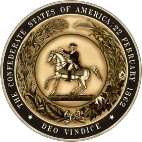
#image_title
On February 4, 1861, a pivotal event in American history unfolded in Montgomery, Alabama, as delegates from six seceded Southern states convened to form a new nation. This gathering marked the official birth of the Confederate States of America (CSA), a confederation that would play a central role in the Civil War and leave a lasting imprint on the nation’s history.
The Montgomery Convention
The Montgomery Convention, as it came to be known, brought together representatives from South Carolina, Mississippi, Florida, Alabama, Georgia, and Louisiana—the first six states to secede from the Union following the election of Abraham Lincoln in 1860. These delegates met with the shared goal of establishing a government that would uphold their vision of states’ rights and protect their economic interests, which were deeply intertwined with the institution of slavery.
Delegates and Their States
The convention was composed of some of the most influential political figures of the time. Here is a list of the delegates and their respective states:
- South Carolina:
- Robert Barnwell Rhett
- Christopher G. Memminger
- William Porcher Miles
- Laurence M. Keitt
- Richard W. Barnwell
- Mississippi:
- William S. Barry
- Jacob Thompson
- Jefferson Davis (later elected President of the Confederacy)
- Alexander M. Clayton
- William L. Harris
- Florida:
- Jackson Morton
- James B. Owens
- James Patton Anderson
- Alabama:
- William Parish Chilton
- Thomas Fearn
- Colin J. McRae
- Jabez L. M. Curry
- Stephen F. Hale
- Georgia:
- Francis S. Bartow
- Martin J. Crawford
- Eugenius A. Nisbet
- Benjamin H. Hill
- Thomas R. R. Cobb
- Louisiana:
- John Perkins Jr.
- Alexander de Clouet
- Charles M. Conrad
- Duncan F. Kenner
- Henry Marshall
These men were tasked with drafting a provisional constitution and establishing the framework for the new government. Their efforts would culminate in the adoption of the Provisional Constitution of the Confederate States of America, laying the groundwork for the formal Confederate Constitution.
The Formation of the Confederate Government
One of the first orders of business at the Montgomery Convention was the selection of a provisional president. Jefferson Davis of Mississippi was chosen for this role, with Alexander H. Stephens of Georgia elected as vice president. Their leadership would guide the Confederacy through the tumultuous years of the Civil War.
The delegates’ work extended beyond the creation of a government structure. They also addressed issues related to military organization, foreign diplomacy, and economic policies, all while preparing for the inevitable conflict with the Union.
Looking Ahead: The Confederate Constitution
While the provisional government was quickly established, the delegates knew that a permanent constitution was necessary to legitimize their new nation. Over the following days, they worked diligently to draft this document, which would be ratified on February 8, 1861.
Stay tuned for our upcoming article on February 8, where we’ll delve into the details of the Confederate Constitution—how it mirrored and diverged from the U.S. Constitution, and what it revealed about the values and priorities of the Confederacy.
FAQ: The Birth of the Confederate States of America
Q: Why did the Southern states secede from the Union?
A: The primary reasons for secession were the protection of states’ rights and the preservation of the institution of slavery, which was integral to the Southern economy and social structure. The election of Abraham Lincoln, who was seen as a threat to these interests, accelerated the secession movement.
Q: Why was Montgomery, Alabama chosen as the site of the convention?
A: Montgomery was centrally located among the seceded states and offered suitable facilities for the convention. It was also seen as a symbolically significant location for the birth of the new nation.
Q: Who was Jefferson Davis, and why was he chosen as the provisional president?
A: Jefferson Davis was a former U.S. Senator from Mississippi and Secretary of War under President Franklin Pierce. His military experience and political background made him a respected leader among the Southern states.
Q: How did the provisional constitution differ from the final Confederate Constitution?
A: The provisional constitution was a temporary framework designed to establish the government quickly. The final Confederate Constitution, ratified on February 8, 1861, included more detailed provisions and reflected the Confederacy’s commitment to states’ rights and the protection of slavery.
For more on Confederate history and to explore our collection of historical flags, visit US Patriot Flags.



More Stories
June 1 – This Day in Confederate History – June 1
May 30th Confederate History